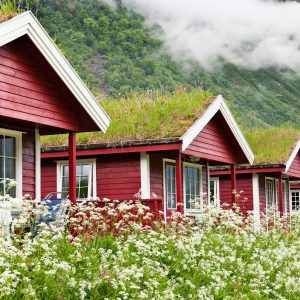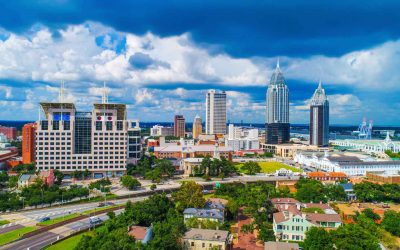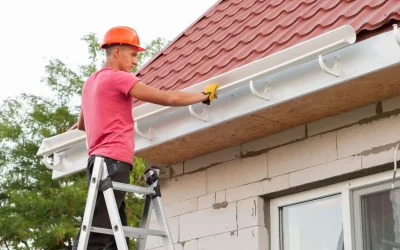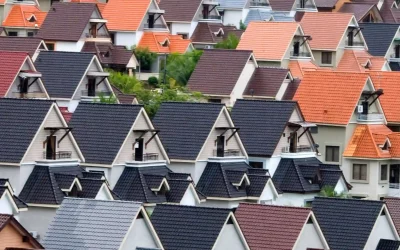Introduction:
As the world becomes more environmentally conscious, sustainable practices are gaining popularity across various industries, including construction and architecture. One notable innovation in roofing that promotes sustainability and energy efficiency is the implementation of green roof. In this blog post, we will explore the concept of green roofing, its environmental benefits, energy efficiency advantages, and additional advantages such as noise reduction, improved air quality, and roof protection. By understanding the potential of green roofs, we can make informed choices that contribute to a greener and more sustainable future.
What is Green Roof?
Green roofing involves the installation of living vegetation on the roof of a building, creating a vibrant and functional green space. This eco-friendly solution typically consists of multiple layers, including a waterproof membrane, a root barrier, a drainage system, a growing medium, and a variety of plants. Green roofs can be implemented on residential, commercial, or industrial buildings, offering a range of benefits beyond traditional roofing systems.

Green roofs also contribute to the visual appeal of a building. They create a lush, green environment that can be enjoyed by building occupants and passersby. Green roofs can be designed to incorporate diverse plant species, creating habitats for birds, insects, and other wildlife, promoting biodiversity within urban areas.
Environmental Benefits of Green Roof
Green roofs provide a multitude of environmental benefits. Firstly, they improve air quality by capturing airborne pollutants and converting carbon dioxide into oxygen through the process of photosynthesis. This natural air filtration helps combat urban heat island effects, reducing the overall temperature in densely populated areas. Additionally, green roofs act as natural stormwater management systems, absorbing rainwater and reducing the strain on drainage infrastructure. By retaining and gradually releasing water, green roofs minimize the risk of flooding and alleviate pressure on local water systems.
Energy Efficiency Advantages:
Green roofs significantly enhance the energy efficiency of buildings. The layer of vegetation acts as an insulating barrier, reducing heat transfer between the interior and exterior of the building. This natural insulation helps regulate indoor temperatures, reducing the need for excessive heating or cooling and consequently lowering energy consumption. In warmer climates, green roofs can reduce air conditioning usage by providing natural shade and evaporative cooling effects. Furthermore, green roofs contribute to overall energy conservation by reducing the demand for power during peak times.
Noise Reduction and Improved Air Quality:
In urban environments, noise pollution is a common concern. Green roofs can help mitigate noise levels by absorbing and reflecting sound, thereby creating a more peaceful living and working environment. The layers of vegetation act as natural sound barriers, reducing noise pollution from traffic, construction, and other sources. Additionally, the presence of plants and vegetation contributes to improved air quality by capturing airborne pollutants and filtering harmful particles from the atmosphere.
Longevity and Roof Protection:
Green roofs offer added durability and protection to the underlying roof structure. The vegetation layer acts as a protective barrier, shielding the roof from ultraviolet (UV) radiation, extreme temperature fluctuations, and other weathering elements. This additional layer of protection can extend the lifespan of the roof, reducing the need for premature repairs or replacements. Furthermore, the green roof system helps regulate temperature fluctuations, minimizing thermal stress on the roof membrane and reducing the risk of damage caused by expansion and contraction.
Conclusion: Green Roof
Green roofs present an innovative and environmentally friendly approach to roofing that enhances sustainability, energy efficiency, and overall quality of life. With their ability to reduce carbon emissions, manage stormwater, improve air quality, provide noise reduction, and offer roof protection, green roofs have become a wise investment for both residential and commercial buildings. By incorporating green roofs into our architectural designs, we can contribute to a greener future, mitigate climate change, and create healthier, more sustainable urban environments.
Overall, green roofing offers a sustainable and environmentally friendly solution to conventional roofing systems. By utilizing the rooftop space and transforming it into a living, breathing ecosystem, green roofs provide a range of benefits that extend beyond traditional roofs. From improving air quality and reducing stormwater runoff to providing insulation and creating attractive green spaces, green roofs have the potential to transform our urban landscapes and enhance the overall quality of life.




